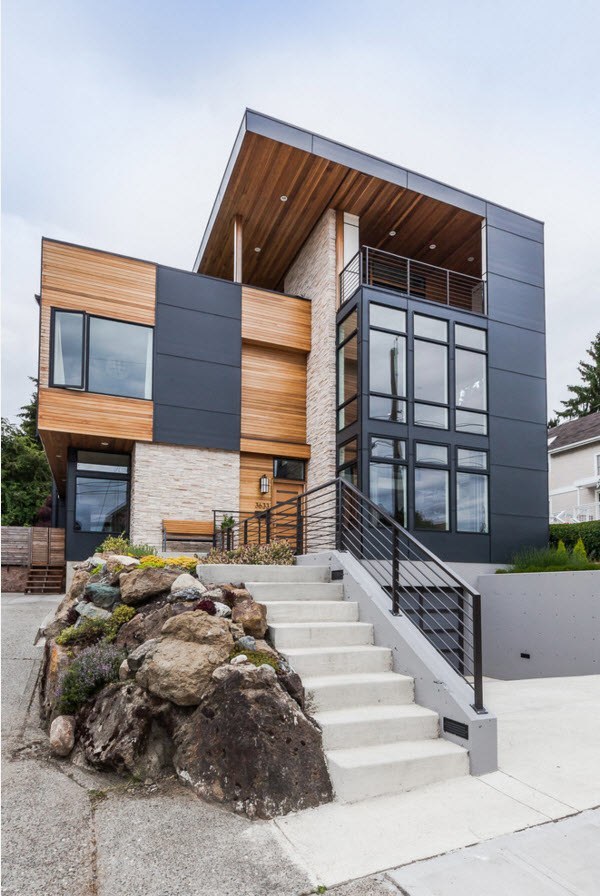#8894. Modern facade with a contrasting triad of materials: metal, wood, and stone
This modern residential house demonstrates an impeccable balance of minimalism and textural diversity. The facade presents a composition of three primary materials: dark metal panels, warm wooden cladding, and light natural stone. This triad creates an expressive contrast that emphasizes the geometric structure of the building.
The spatial solution of the facade is based on clean rectangular forms arranged in an asymmetrical composition. Particularly notable is the cantilevered wooden overhang above the entrance area, which gives the building dynamic movement and creates an interesting play of light and shadow. Large panoramic windows with thin profiles provide abundant natural lighting to the interior spaces and visually lighten the massive structure of the building.
The architect has masterfully integrated the structure into the natural landscape, preserving natural rock outcroppings at the base of the staircase. This solution not only demonstrates an ecological approach to design but also creates an organic transition between man-made architecture and the natural environment. The concrete staircase with minimalist metal railings elegantly navigates around the natural elements, highlighting the thoughtfulness behind every detail of the project.
When designing your own facade, it's worth paying attention to techniques such as contrasting material combinations, playing with volumes and protruding elements, and integrating natural elements of the site into the architectural concept. It's also important to consider how the facade is perceived at different times of day and under various lighting conditions, which can be enhanced by properly planned illumination.
